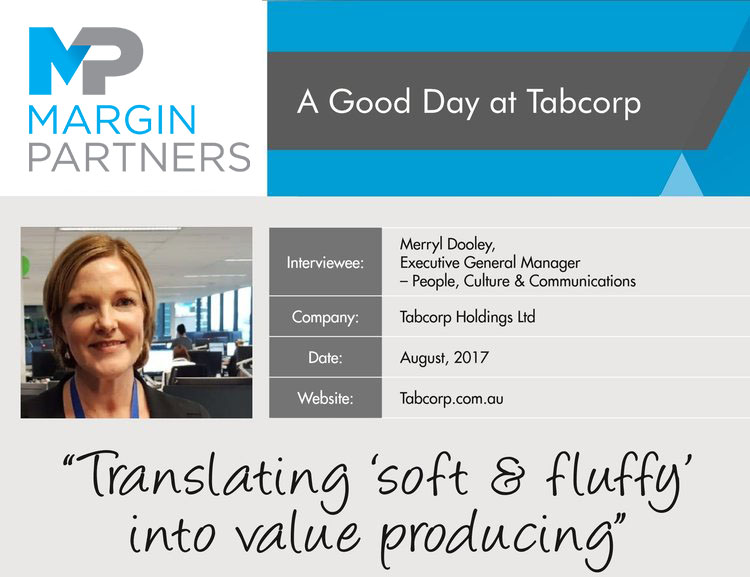In the Jan-Feb 2010 edition of the Harvard Business Review, authors T.M. Amabile & S.J. Kramer provided ground breaking research findings into what produces a “good day” in the workplace. Within some 12,000 individual diary entries, “progress” or the sense of ‘moving the dial’, was the vital ingredient discovered in over 76% of participants “best days” at work.
“Good Workday” interviews explore how leaders promote ‘moving the dial’, balancing business performance and mitigation of Margin Erosion.
1. Describe a good work day for yourself:
It’s having the time and space to play to my strengths & focus on the long-term “People Needs” of our business. It’s having the necessary conversations with my team to allow them to do what they do best; whilst being confident that our directions are aligned. A good day would include some external engagement with thought leaders either domestically or internationally. I constantly seek outside perspectives to enhance our internal People philosophies.
2. Describe a good work day for your business:
It’s a challenging time for Tabcorp staff right now. With the Tatt’s merger imminent, people are naturally distracted and much effort is going into regular communication and refocusing. Commercial performance is naturally the major metric, so remaining on budget is the priority. Other key deliverables are tied to customer yields and increasingly the conversion to digital user channels. Market share gains are rewarding.
From a HR perspective, the translation of what can be labelled “soft & fluffy” initiatives into value creating profit impact items is another key contributor. It’s incredibly satisfying for our business to see people lead initiatives deliver tangible returns in a financial year.
3. Do the two days align?
They do, with obvious differences in timings. People strategies are a long-term build and payback. Our shareholders require annual dividends. HR helps ready the pipeline. I take the view that if there is misalignment within our business this must become the responsibility of the Functional owner. Team Leaders must pave the way forward for their people to follow. At Tabcorp, we utilize the Gallup Organization’s Clifton StrengthsFinder model to measure individual strengths and all 34 of the associated theme’s. This tool plays a vital role in ensuring we have the right people in the right roles delivering desired outcomes.
4. How many good days have you had in the past 3 months?
Fewer than usual but let me qualify. The aforementioned merger has resulted in us needing to keep our “wheels spinning” whilst we wait for the implementation to commence. It is frustrating, distracting and exciting, all at the same time. I find myself diving back into day to day matters to ensure our people are ready to act once we exit the holding pattern.
5. Where is Margin Erosion most likely to occur in your sector?
Our Business is extraordinarily dependent on the performance of staff in the multitude of venues that distribute our Wagering and Keno products. With the obvious exception of Digital, we do not have direct relationships with users. The face to face customer experience that results can vary dramatically due to a complete turnover of retail staff that inherently occurs every 2.5 years. Our greatest Margin Erosion pain point is the ongoing investment in training to ensure expected levels of service delivery
6. Key Takeout:
As two significant Australian businesses prepare to merge, Merryl Dooley is counting on Tabcorp’s long term investment in “Strengths Based Leadership” to successfully integrate two very different cultures. When this will be allowed to happen remains uncertain. Ensuring business performance is anything but ‘soft & fluffy’ in the interim, is the greater Margin Erosion challenge.



